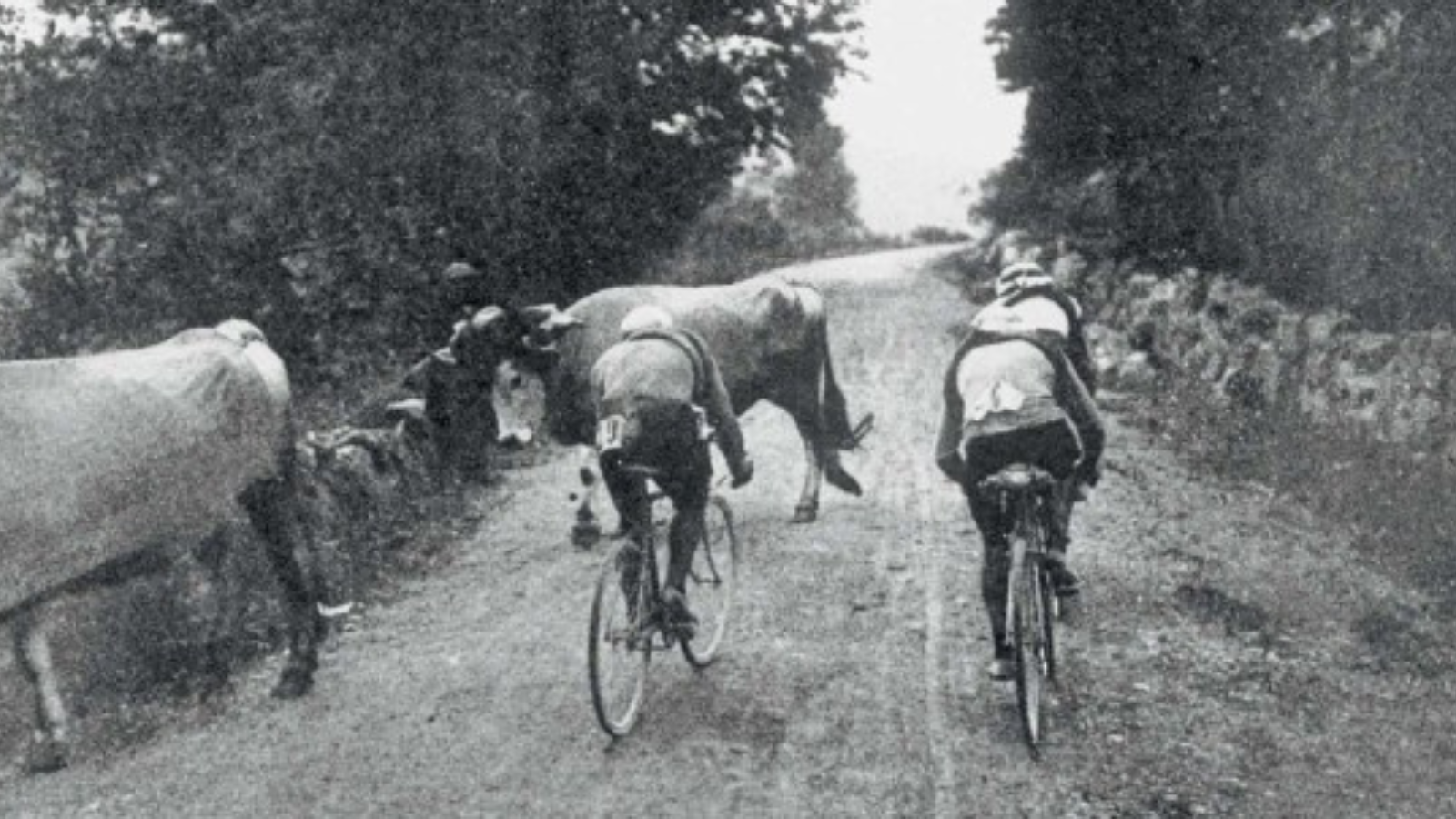Nowadays, one of the basic things organizers of a cycling race have to prepare for is to make sure, that no one else uses the same roads during the event. Of course, errors can still happen at any time, but this is one of those basic things that define modern-day cycling races.
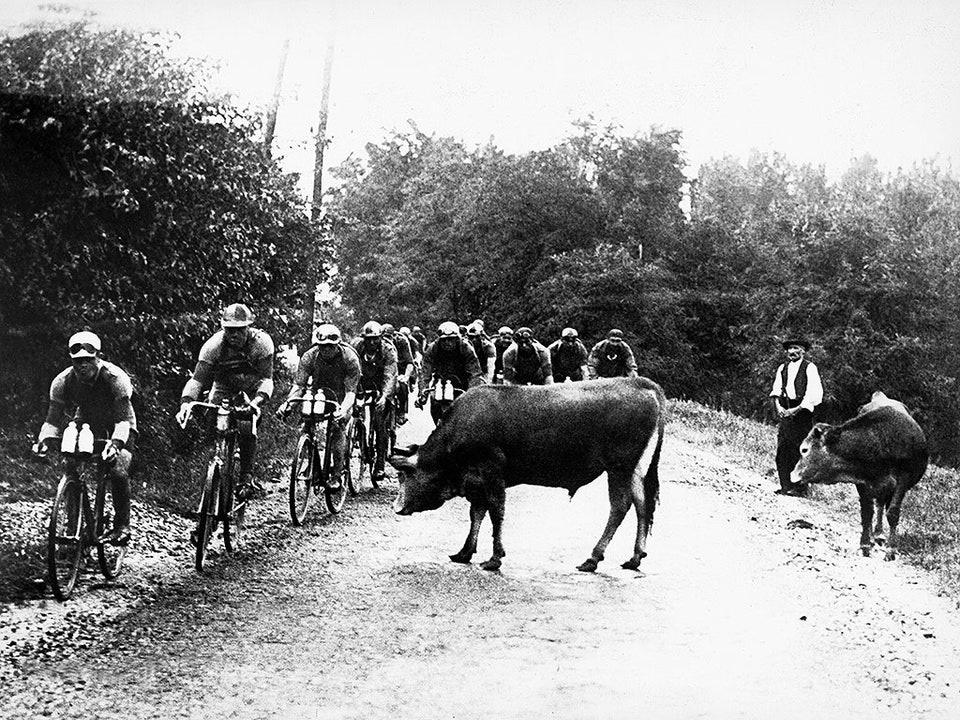
Very few other sports reflects the changes in everyday life during the past century so plainly, like professional road cycling races do. Organizers have to secure the route of the races, because roads are crowded with cars, trucks, buses, etc. On the other hand, this seems relatively easy to calculate and execute, because most of the time the peloton is compact, and the time gaps between smaller groups, for example, between the group of escapees and the main bunch are relatively small,
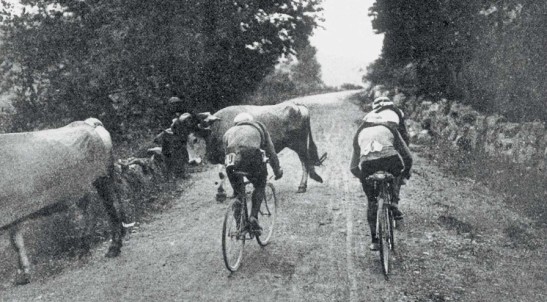
During the early days, road cycling races were professional events either, only
they had to adjust themselves to a bit different world
and calculate with a different rhythm of both teveryday life and the nature of cycling competitions.
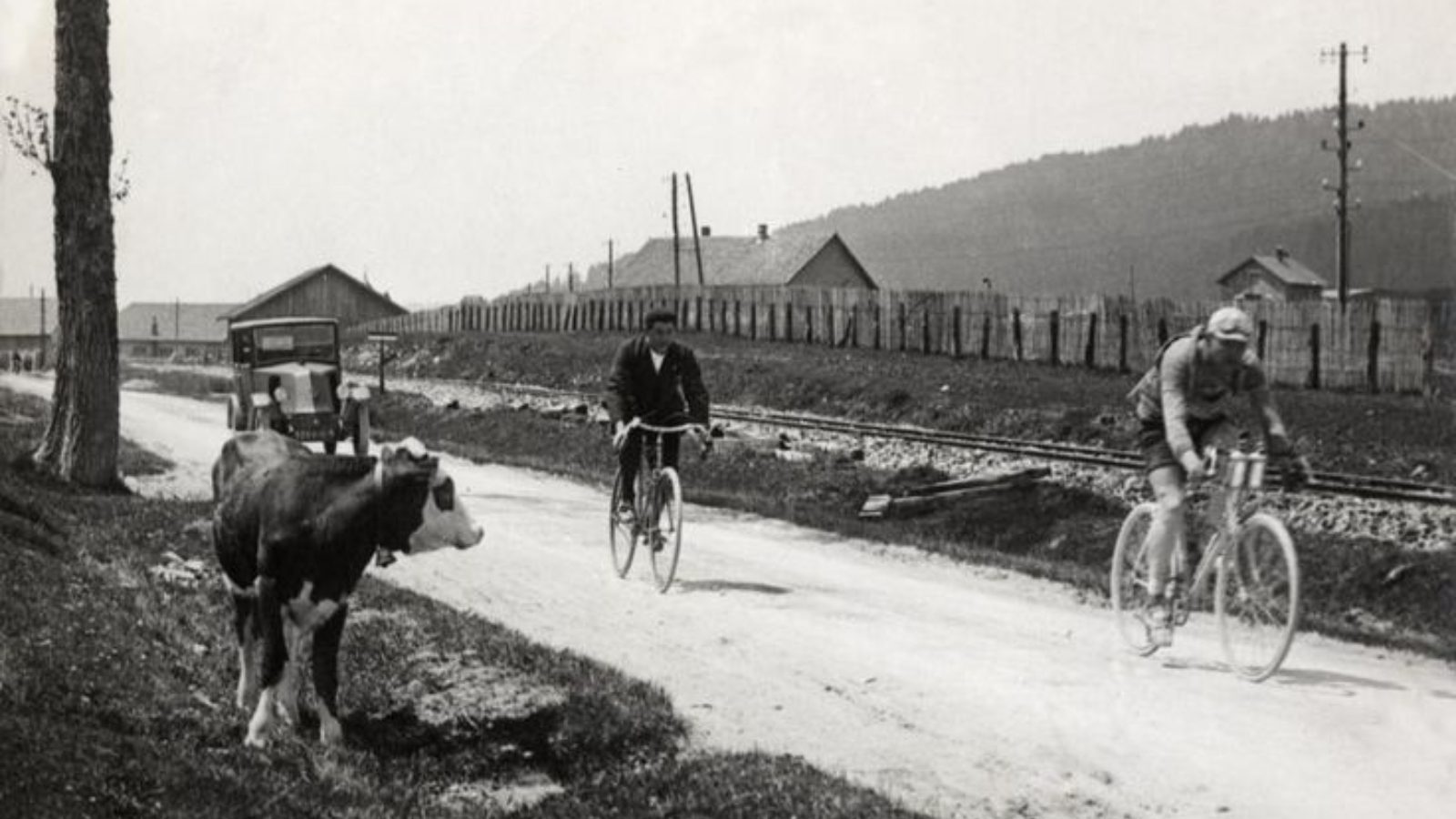
Roads were untarmacked, and unlike the bicycle, which became useful for every social class in some way, cars were rather luxury products, or at least, they didn’t rule the roads as they do nowadays.
Cycling races were longer and less compact, especially at the Tour de France, where Henri Desgrange, the “founding father” of the race was obsessed with the idea, that cycling is an individual sport, thus everyone has to ride on their own, and no teamwork was welcomed. Tour de France stages were over 300 km, or sometimes over 400 km long, lasted usually a half day to complete, and the gaps between the riders were quite large.
No wonder, that among those circumstances, cycling races contacted everyday life on a different level.
And everyday life, especially in the more rustical regions of France, of course, involved animals.
Even nowadays, when Tour de France visits the Alpes or the Pyrenees, it can happen easily, that suddenly cows occupy the road. (A few years ago Warren Barguil had an interesting encounter with them.)
100 or even more years ago it must have been a common part of the race, even when for our modern eyes it seems to be a curiosity.
MORE TOUR DE FRANCE IN THE FIRST HALF OF THE 20TH CENTURY
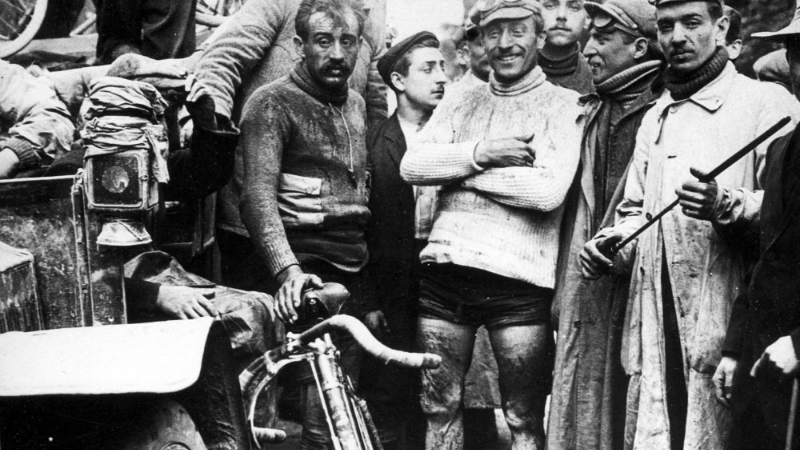
5 facts about Tour de France 1903
The first Tour de France started at 3 pm on the 1st of July in 1903 from the Café au Reveil Matin (Paris).
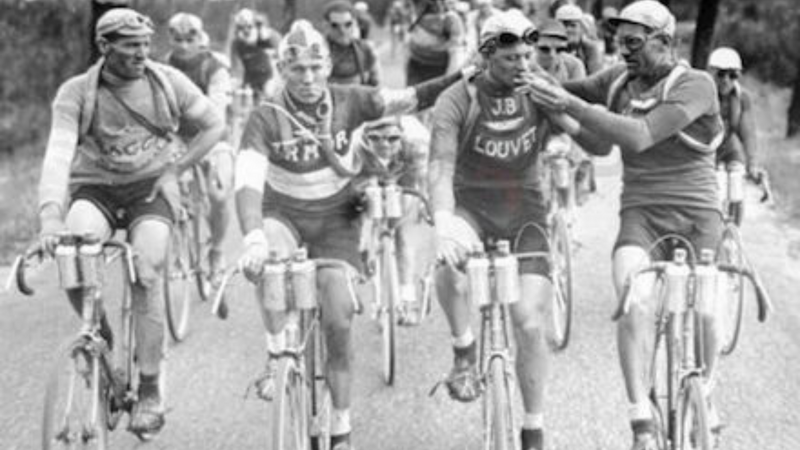
Who were the smoking cyclists at Tour de France 1927
The smoking cyclists of Tour de France 1927 is one of the most famous vintage cycling images from the heydays of road cycling races. It’s popular because it conveys a certain aspect of the many differences between our time and the life hundred years ago. The dissonance between our 21st-centurian knowledge that smoking is very … Read more
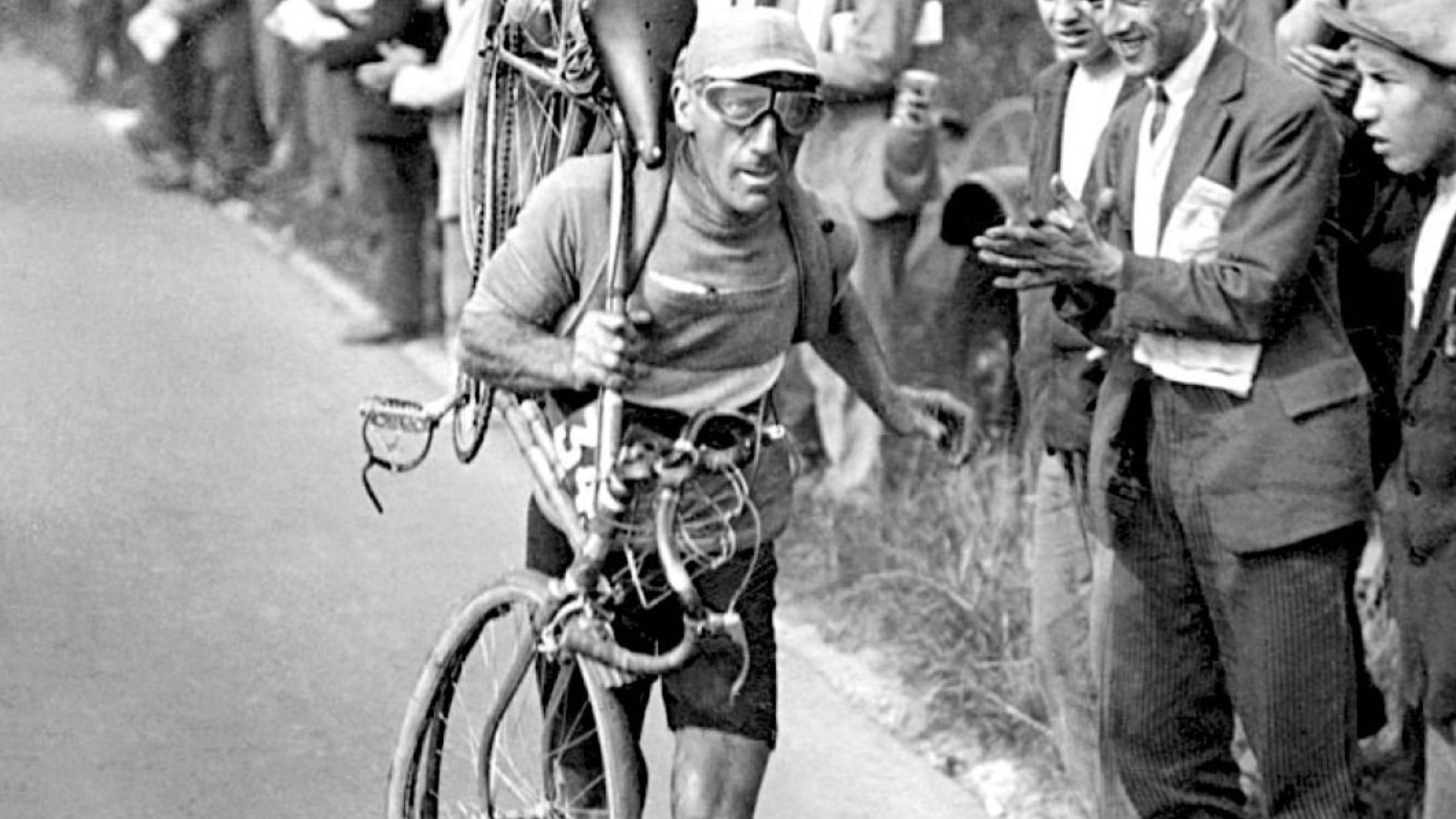
Faces from the peloton: Victor Fontan (1892-1982)
A cyclist running while carrying his bike on his shoulder. Surely, you’ve seen this vintage cycling image several times. Now it’s time to learn a bit more about the protagonist of the picture. Victor Fontan (1892-1982) in the Faces from the peloton series of PelotonTales blog. A local rider World War I (as did World … Read more
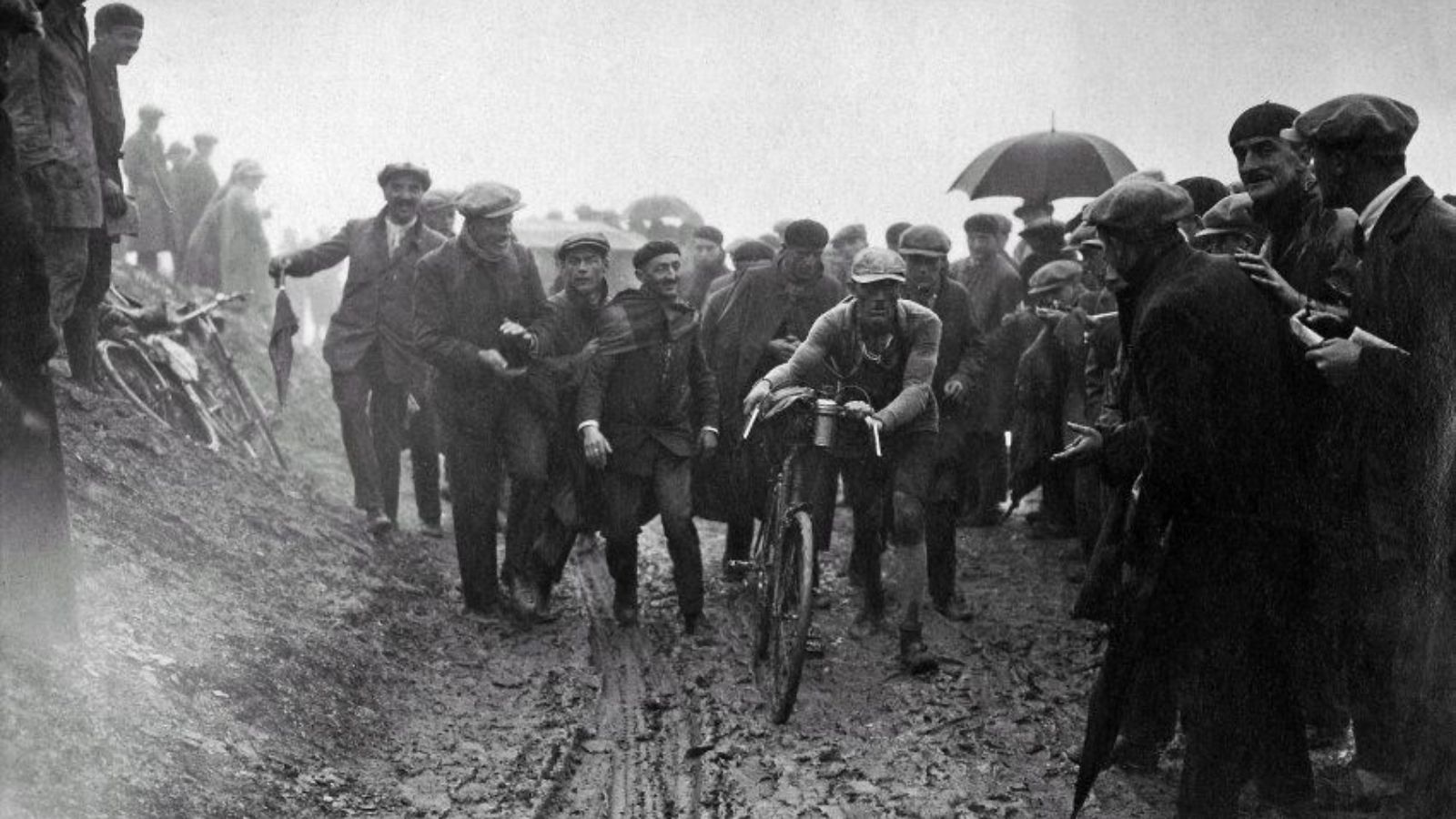
The toughest Tour de France stage ever
The 10th stage of Tour de France 1926 is often dubbed as the toughest stage ever in the history of the race. The 326 km long route between Bayonne and Luchon on the 6th July 1926 went down in history also as one of the most chaotic ones thanks to the extreme weather conditions in … Read more
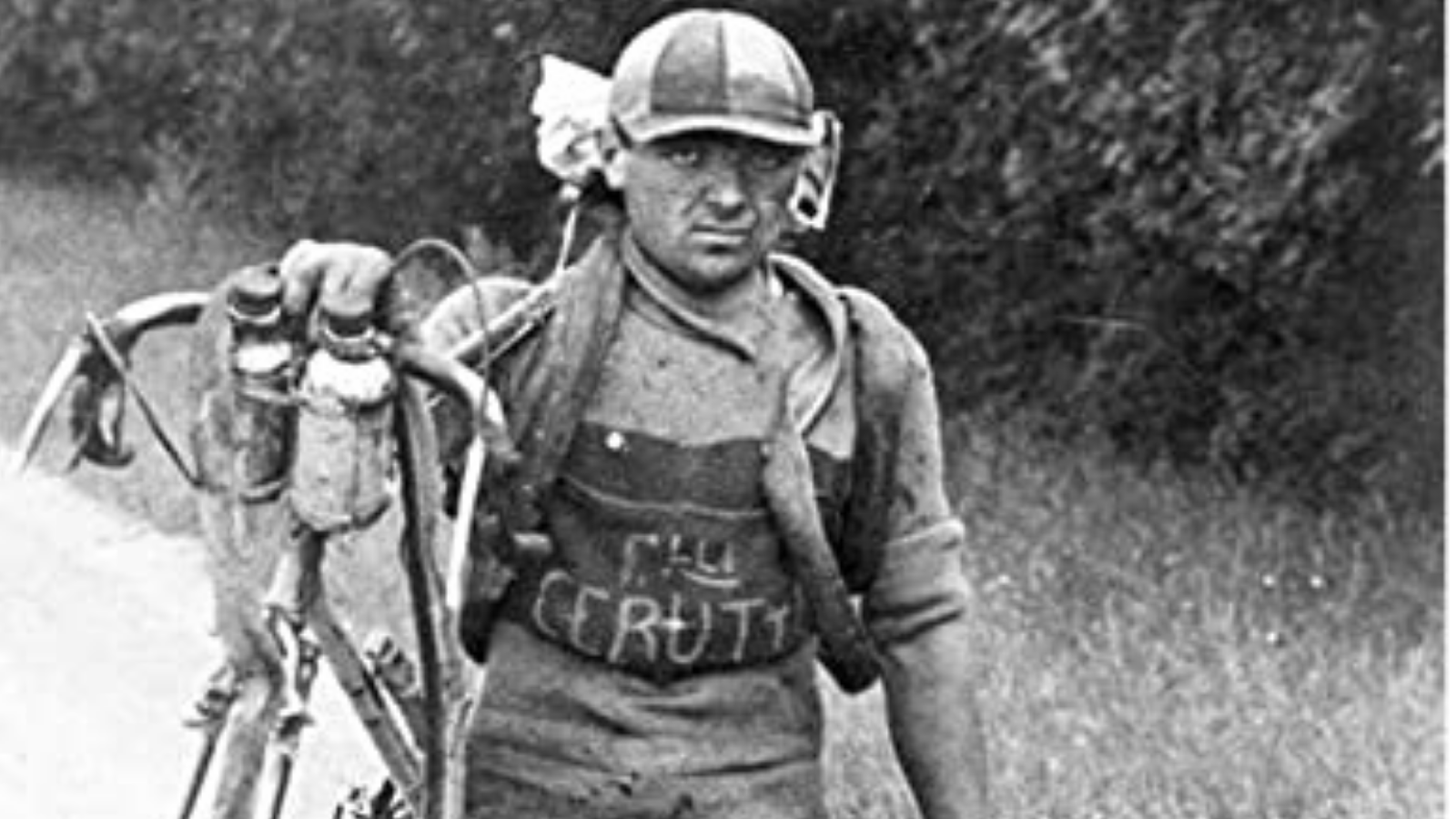
The grumpy cyclist with the broken bicycle – Giusto Cerutti at Tour de France 1928
Giusto Cerutti (1903-1993) had at least one bad day at the Tour de France in 1928.We don’t know much about the grumpy cyclist with the broken bicycle. But one thing is sure, he is the unlucky (anti)hero of one of the most searched vintage cycling images on the internet.According to ProCyclingStats, Cerutti abandoned the race … Read more
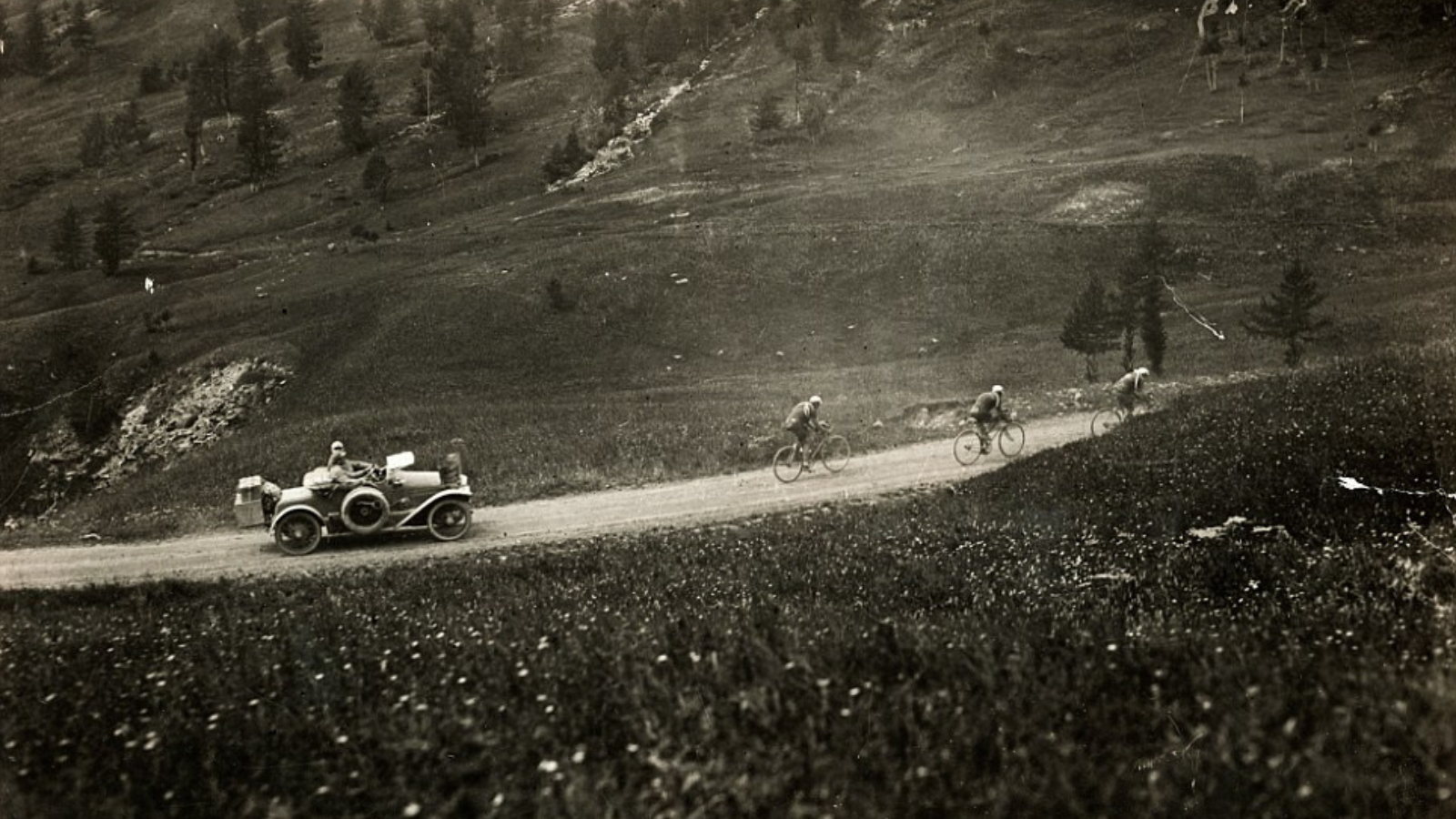
Climbing Col d’Allos at Tour de France 1914 -Vintage cycling image of the day
Tour de France 1914 started on the same day, 28th June, as the Austro-Hungarian Archduke Franz Ferdinand and his wife, Sophie, Duchess of Hohenberg were assassinated in Sarajevo. When the riders lined up in the middle of the nigh for the start of the first stage in Paris, they knew nothing about that this day … Read more
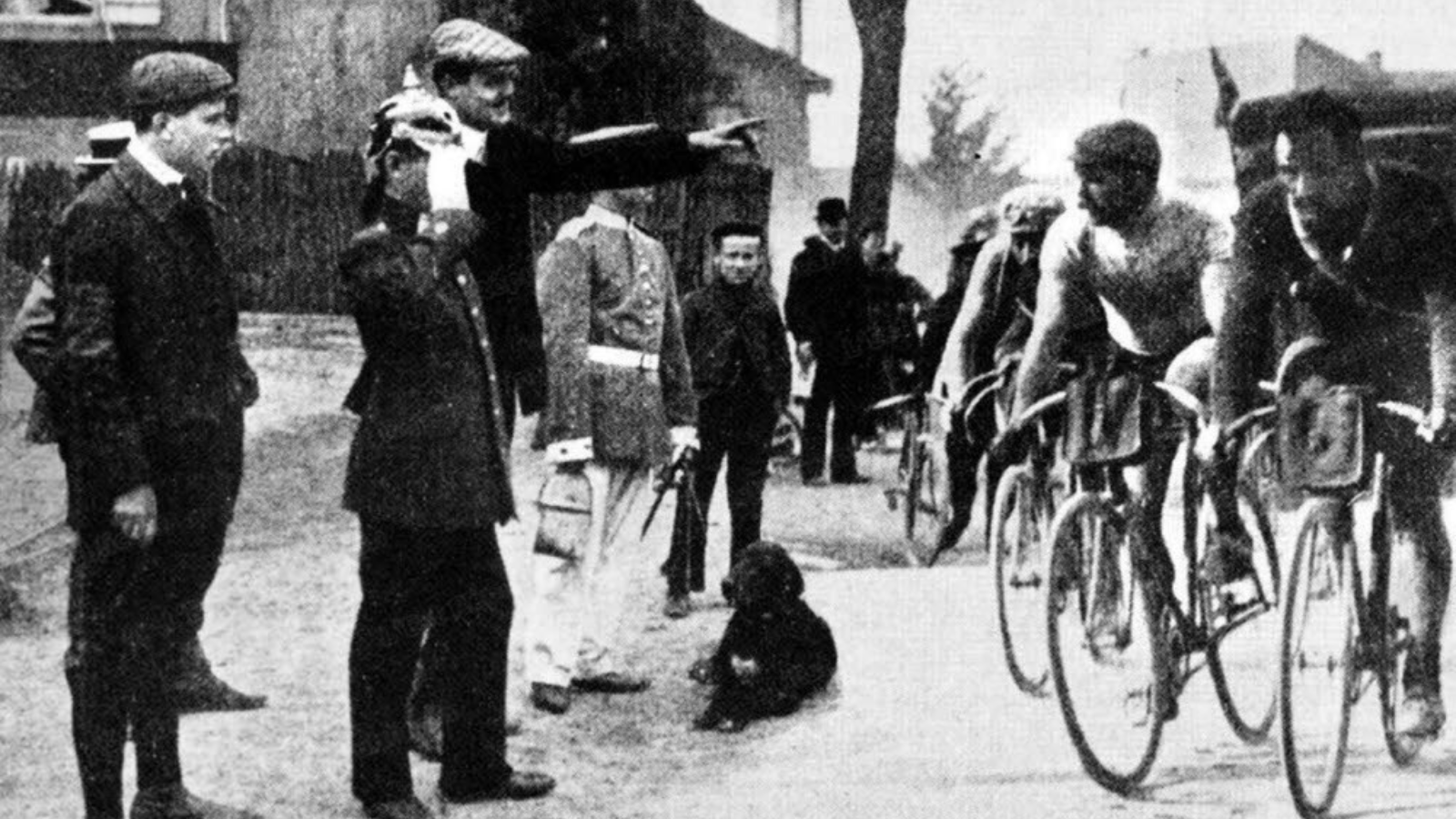
When Tour de France went abroad before 1914
Defining historical events of the 20th century often left their marks on road cycling history. Just think about, for istance, the impact of World War 1 on the mythology of some famous races, like Paris-Roubaix. The born of the famous phase of “Hell of the North” is a quite well known story among cycling fans. … Read more

Faces from the peloton: Hippolyte Aucouturier (1876-1944)
Although the idea of a French cyclist in a striped shirt might seem like a little bit of a cliché, sometimes stereotypes are carrying quite much truth in themselves. Just take a look at Hippolyte Aucouturier! One of the most iconic characters from the early days of road cycling races. Nevertheless, he was not only … Read more

Cyclists meet a local inhabitant during Tour de France 1925
During the first few decades in the history of Tour de France, mountain routes were kind of “terrae incognitae”, uncharted territories. We all know the story when Alphonse Steniès persuaded Henri Desgrange to include Tourmalet in the program of Tour de France 1910. He was struggling even to find a car driver, a local guide … Read more
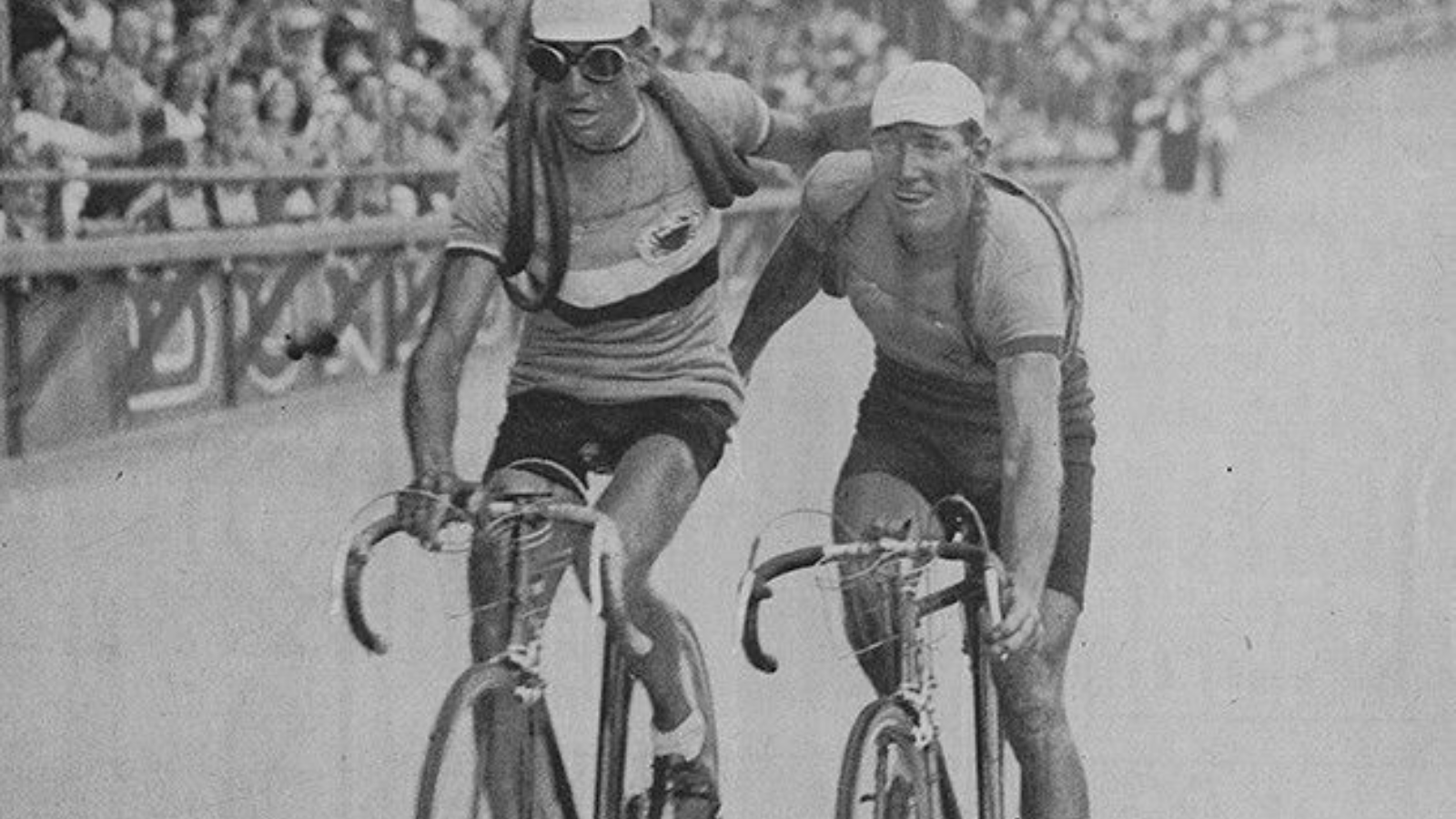
André Leducq and Antonin Magne crossing the finish line together (Tour de France 1938)
Before Greg LeMond and Bernard Hinault on the top of Alpe d’Huez, there were André Leducq and Antonin Magne in Paris. Two dominant French riders from the first part of the 1930s, both Leducq (1930 and 1932) and Magne (1931 and 1934) won the Tour de France twice. In the very last stage of Tour … Read more
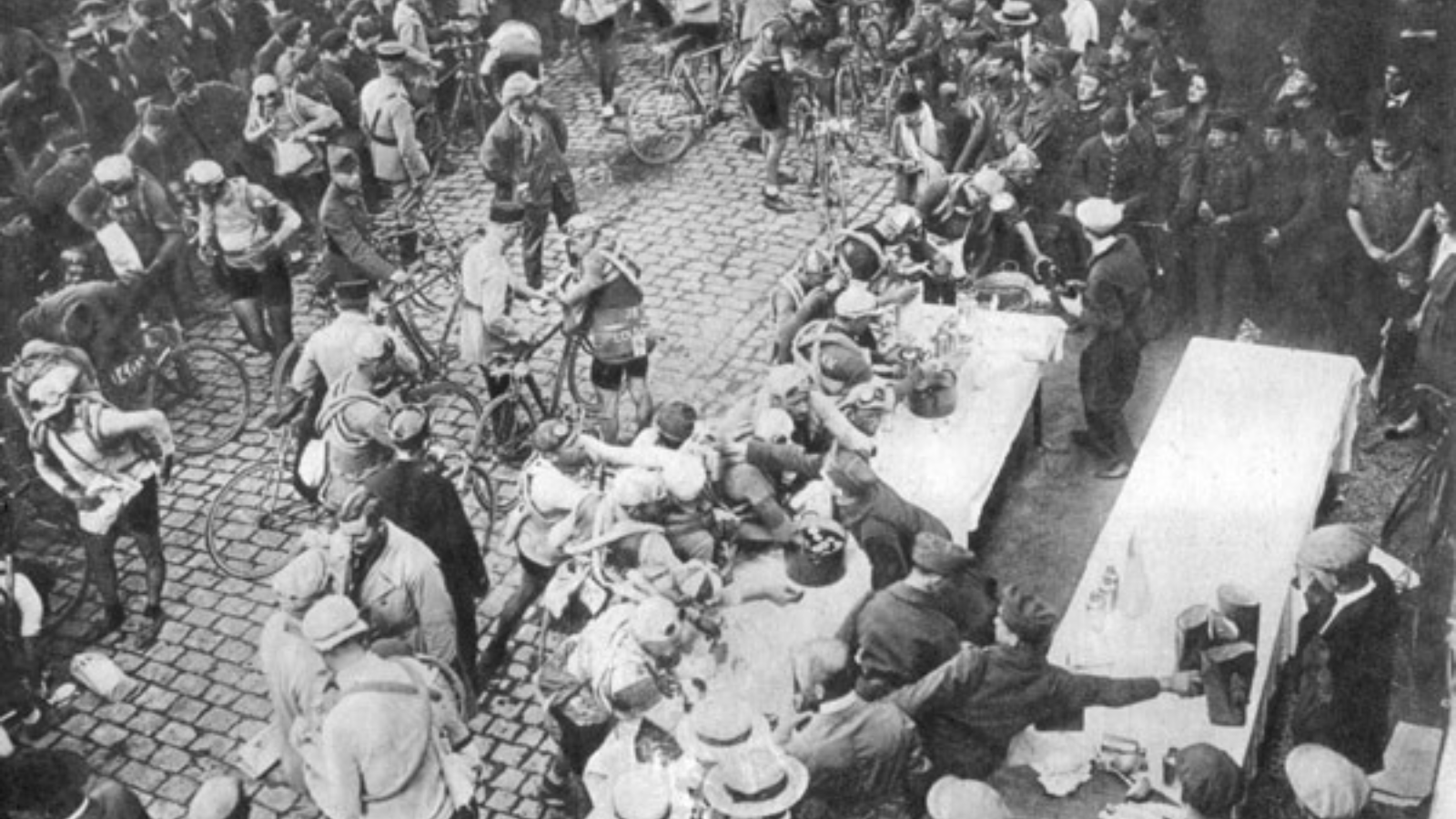
5 facts about Tour de France 1925
After the quarell between Henri Desgrange and Henri Pelissier last year, a new rule was made, that any rider that harmed the Tour’s image would be banned for the next years. Team Automoto had a really strong line-up: Ottavio Bottecchia (Tour de France winner 1924 and 1925) , Philippe Thys (Tour de France winner 1913,1914,1920) … Read more
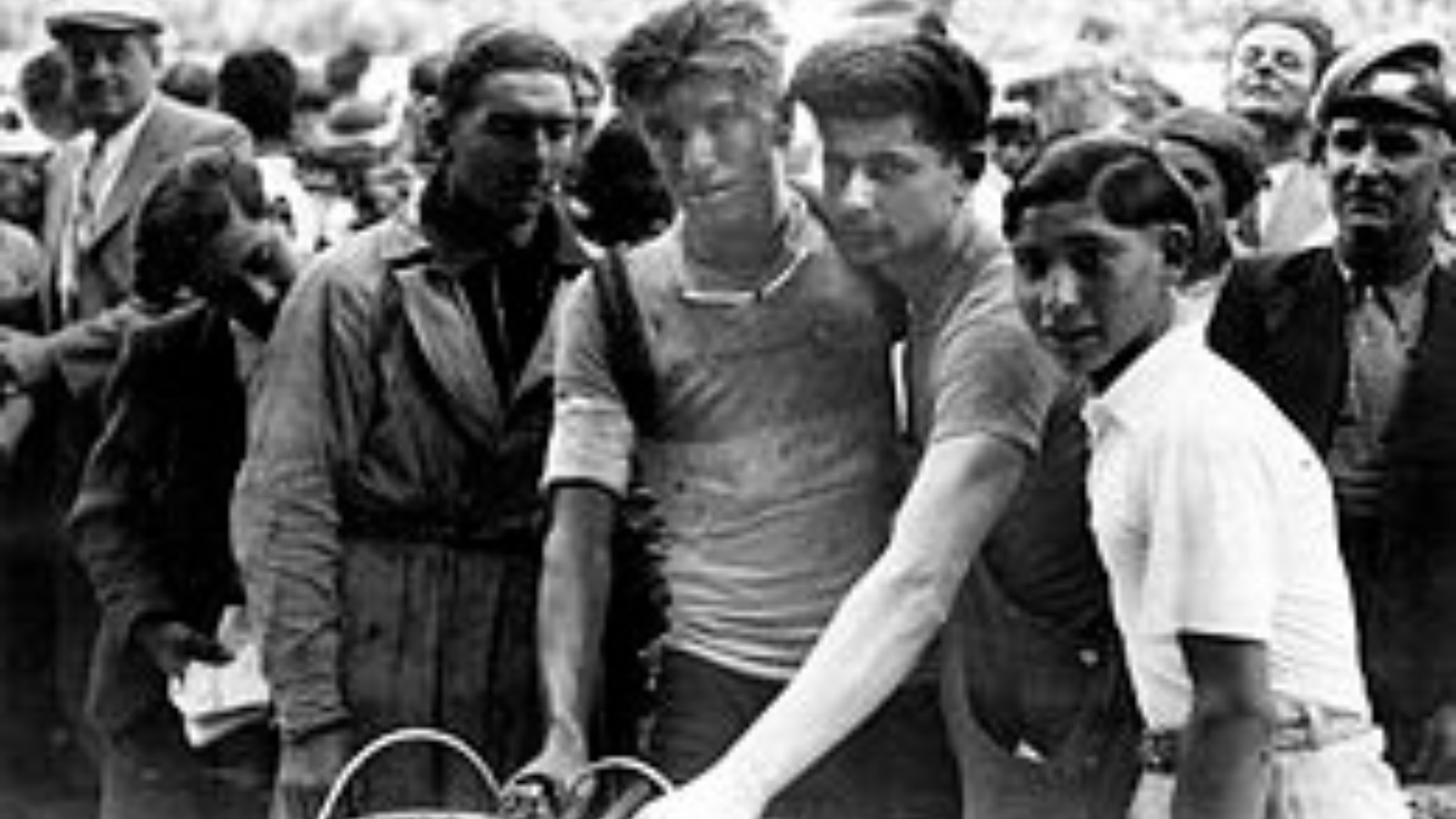
Faces from the Peloton: Theo Middelkamp (1914-2005)
You would never guess in what kind of stage the first Dutch Tour de France stage winner, Theo (Theofiel) Middelkamp (1914-2005) gained his victory. In a mountain stage in the Alps, including Télégraphe, Galibier and Lautaret. Considering that even in the early 1950s, when Wim van Est, the first Dutch cyclist to wear the yellow … Read more
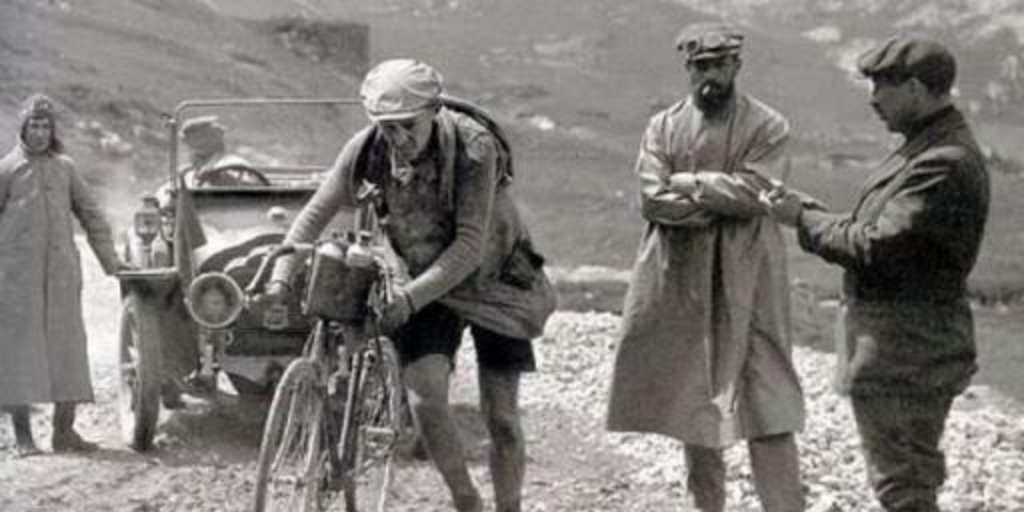
Introducing Col du Tourmalet to Tour de France
It was a great moment and yet one of the weirdest situations in the history of Tour de France, when and, it seems to be more important, how the organisers decided to put Col du Tourmalet in the program. Crossed Tourmalet stop. Very good road stop. Perfectly passable. -stood in the telegram Alphonse Steinès sent … Read more
